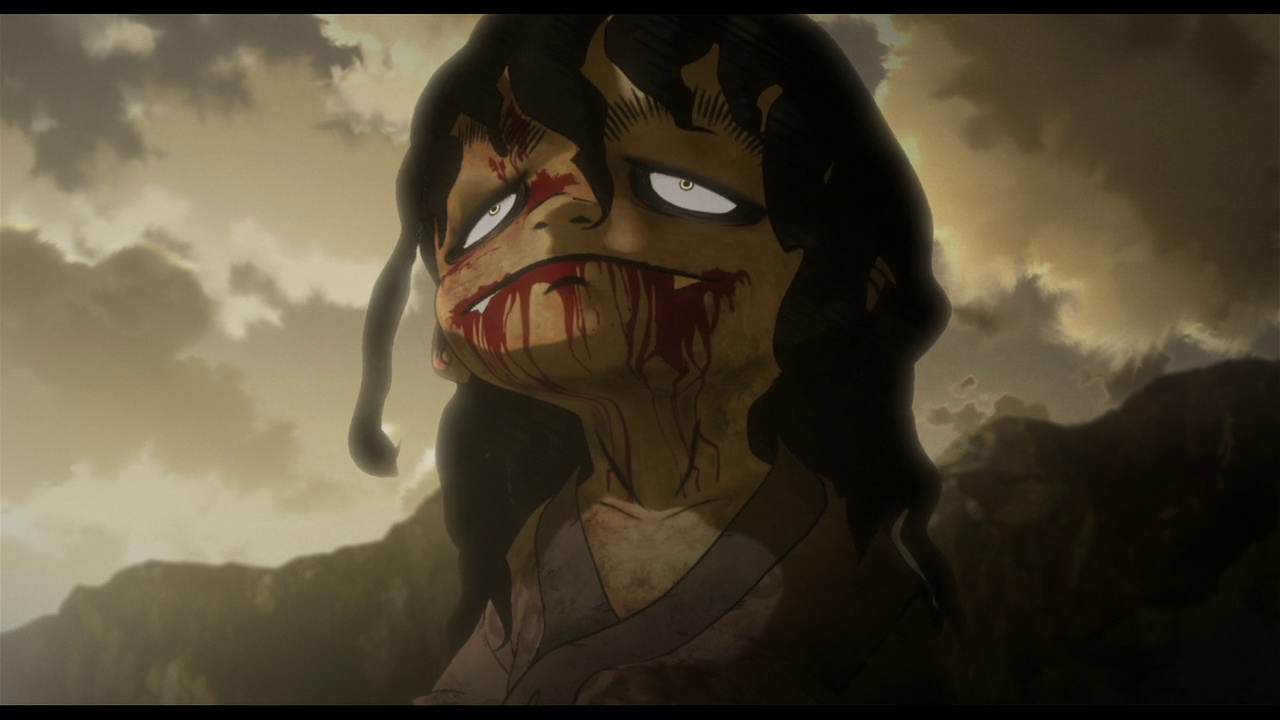By Chlotrudis Independent Film Society
Rating: 4 cats
Director: Kei’ichi Sato
Starring: Kinya Kitaohgi | Masako Nozawa | Megumi Hayashibara | Yoshihiro Ike

Country: japan
Year: 2012
Running time: 76
IMDB: http://www.imdb.com/title/tt2328505/
Jason says: “These days, there aren’t a whole lot of movies being made using animation because they wouldn’t work any other way; digital capture and effects have come too far, so even ambitious manga are done live-action now. There are still occasionally throwbacks like ASURA, though, where animation doesn’t just allow it to be amazing to look at, but means you don’t have to put a child actor in the title role.
“Because, man, who would want to subject a kid to being a part of this? Born in the middle of war to a mother who died when he was very young, Asura (voice of Masako Nozawa) is raised by wolves until, at the age of nine, he is an accomplished hunter of animals and killer of men, eating the meat of both. A Buddhist monk (voice of Kinya Kitaoji) encounters him and teaches him a sutra to try and civilize him; later, he is sheltered by Wakasa (voice of Megumi Hayashibara), who is beautiful but as poor as everybody else in the drought-ridden Japan of the time.
“ASURA is a stunning movie visually; the animators at Toei (who usually tackle much more kid-friendly material) combine CGI and hand-drawn animation in surprising ways and get a unique, clean result. I’m not familiar with original creator George Akiyama’s work – even the American publishers willing to touch the work of such a controversial creator have shied away from his work – but it’s pretty amazing how the visuals look like they could have jumped right off the page but still feel unquestionably like a movie, even as it goes from static imagery to spectacular sequences with swooping cameras and devastation. The film uses a mix of had-drawn and digital imagery, and it’s surprising how malleable and expressive the latter are, especially Asura himself.
“What’s being depicted is pretty stunning, too; it’s as unflinching and horrific a depiction of massive poverty, starvation, and desperation as you’ll see. There’s a sense of genuine desperation that almost infects the audience, where the suffering seems immediate rather than soft-pedaled, although director Kei’ichi Sato manages to straddle the line between too terrible to watch and interesting enough to keep the audience’s attention very well. Asura himself is a fascinating character; he starts out a monster, but an almost completely innocent one. Learning the concept of empathy tortures him, as problems with simple, direct solutions are now complicated by morality and even his attempts to be a good person are stymied by mistrust.
“A lot of that comes through via character animation, although Masako Nozawa packs a lot of hurt into what she does; Asura’s dialogue is mostly inarticulate, yelling out ‘Wakasaaaaaa!’, or reciting a sutra while clearly not understanding the meaning yet. Still, a lot of character development does seem to get truncated at the end; those unfamiliar with the story may want to know why the monk does that or think that maybe the fifty-year jump at the end covers a lot of material that might make for an interesting movie itself.
“This is an animated film, though, and time is precious. Besides, ASURA is such an intense 75 minutes that piling too much more on top of it might just break the audience. 4 cats
“Seen 1 August 2012 in Concordia University Theatre Hall (Fantasia 2012: AXIS, HD)”
